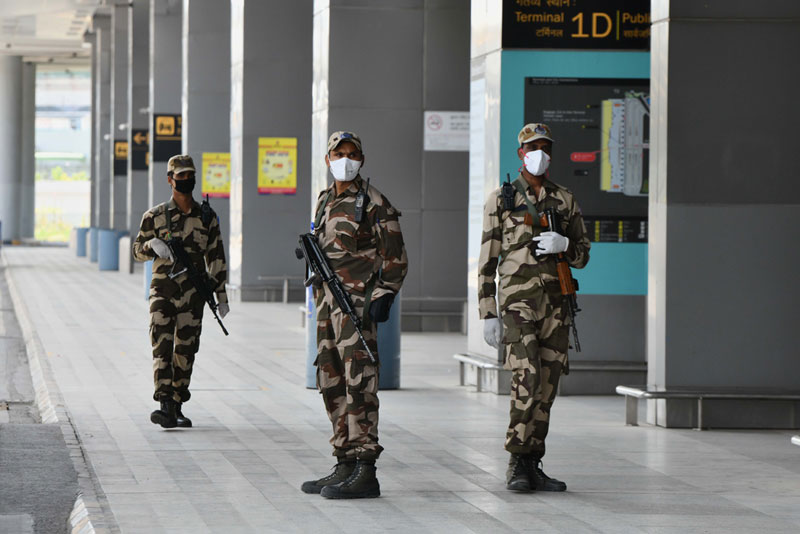The market for CCTVs keeps growing with new, sophisticated technologies now available
Palak Gupta
A closed-circuit television (CCTV) system consists of a camera, lens, monitor and recorder. The camera/cameras pick up the images, which are transmitted to a recording device and then to a monitor. CCTV systems have many components with a variety of functions: including cameras, lenses, data distribution and power.

CCTV technologies are refined on continual basis so as to improve performance in areas such as digital equipment options, data storage, component miniaturisation, wireless communications and automated image analysis.
Types and Their Uses
Surveillance cameras can be effectively used for crime control and its prevention. Law enforcement agencies and criminal justice system can benefit from public surveillance technology in areas of real-time arrest, interrogation/investigation, evidence accumulation, prosecution, emergency response situations, virtual guarding among others.
Poor quality footage fails the aforementioned purposes; hence it is imperative to invest in functional and high-quality cameras. The two main categories of analog CCTV cameras are fixed cameras and pan/tilt/zoom models which can rotate horizontally and vertically to cover more area. There’s a wireless CCTV too.
Internet Cameras and Images
Internet Protocol camera, or IP camera, which is a type of digital video camera, receives control data and sends image data via the internet. It is commonly used for surveillance and requires no local recording device except a local area network. In order to transfer the images, it requires nothing more than a network connection. The images captured by an IP camera may be viewed from anywhere in the world via the internet, whether on PC, laptop or mobile phone. CCTV cameras are operated from a manned control room.
Number Game
India has reported data of nine different cities that accumulate 2,74,784 surveillance cameras. New Delhi alone has 1,79,000 CCTV cameras.
As a part of Nainu Saitham (Telugu for me too), more than a lakh CCTVs are being installed in Hyderabad alone. The project was launched in November 2017 and Hyderabad Police will monitor the feed. According to Andhra Pradesh Public Safety Act of 2013, an establishment of a daily footfall of over 100 people, by law, is required to install CCTVs and inform the cops, and failure to do so attracts prosecution.
A BPRD report titled ‘Data on Police Organisations’ reveals that a total of 4.27 lakh CCTV cameras are available to the police across the country of which Telangana police alone accounts for 64 per cent. The report also states that the number of CCTV cameras in the country has increased exponentially from a measly 24,483 in 2016 to a whopping 4.27 lakhs in 2019.
After the 2012 Nirbhaya incident in Delhi, Justice Usha Mehra Commission had recommended several measures to embolden women safety in the country. Installation of operational CCTV cameras at public places was one of them. The Commission also recommended that CCTV cameras be installed in PCR vans and police stations in addition to public places and transport.
With approximately 15.28 and 14.36 CCTV cameras every 100 individuals respectively, the United States followed by China have the most numbers of cameras installed for public surveillance. The law enforcement may choose among overt, semi-overt and covert camera options, depending on the need and intended impact. The UK, too, is recognised as a leading user of CCTV and the public are used to seeing CCTV cameras on virtually every high street. The estimates of the number of the CCTV cameras in the UK vary from 1.85 million to 5.9 million.
Complex and Varied
CCTVs can be mounted on walls, poles, fences, ceiling, corners and building exteriors. They are not always overt and visible to the naked eye. There are some extremely sophisticated devices that employ features like bulletproof casing, night vision capability, motion detection, and advanced zoom and automatic tracking capacities.
Camera technology has grown increasingly sophisticated. Some even have infrared capability allowing for recording in pitch darkness. It is said that some cameras are so advanced that they can zoom in on a book or a cigarette packet from over 100 metres.
IBM has developed an IP video analytics system which combines monitoring with facial recognition. The US’ Intellivision also offers analytics systems which enable licence plate tracking, facial recognition and object recognition. HGH Infrared’s Spynel system allows infrared wide-area surveillance, and CBC’s GANZ allows long-range, hi-resolution surveillance.
Investigative Tool
Boston Marathon Bombing: The significance of public surveillance technology was well demonstrated way back in April 2013 when the US authorities identified two suspects in the Boston Marathon bombing after sifting through video images captured by the city’s cameras. Surveillance footages are vital piece of evidence.
You must be logged in to view this content.

